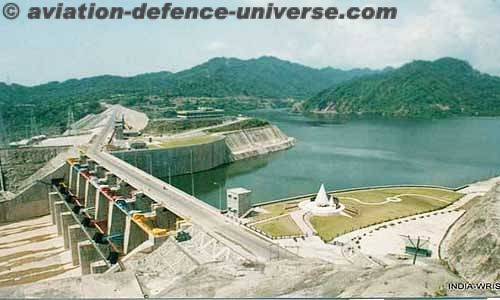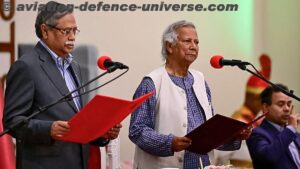- Shahpur Kandi Dam on river Ravi operative
By Jai Kumar Verma
New Delhi. 06 March 2024. It is a project which has taken a long time to see the light of the day but Shahpur Kandi dam on river Ravi is now ready and functional, and it is no surprise that India’s western neighbour is not happy with this. Under Indus Waters Treaty (IWT), India which has full right on the water of River Ravi, finally succeeded in saving 1,150 cusecs of water which was going to Pakistan since its inception in 1947. Now this water would be utilised in irrigating areas of Jammu & Kashmir and Indian Punjab. And Pakistan understandably is upset.

The importance of water cannot be over emphasised. In 1995 former World Bank vice president Dr. Ismail Serageldin stated that “If the wars of this century were fought over oil, the wars of the next century will be fought over water — unless we change our approach to managing this precious and vital resource.” Inhabitants of Central and Western Asia and from a few parts of Africa, are migrating because of water scarcity. According to experts about 72% of aquifers are drying up.
In 1979 the then Chief Ministers of Punjab and Jammu & Kashmir, Parkash Singh Badal and Sheikh Abdullah respectively signed an agreement to build Shahpur Kandi dam as well as Ranjit Sagar Dam on River Ravi on the border of Punjab and J&K. The Ranjit Sagar Dam is also known as the Thein Dam which is a hydroelectric project of Punjab Irrigation Department. Although the agreement was signed in 1979 but the foundation stone was laid down by the then Prime Minister PV Narasimha Rao in 1995. Not much progress was visible because of disputes between both the sates, paucity of funds and not much interest by the central government.
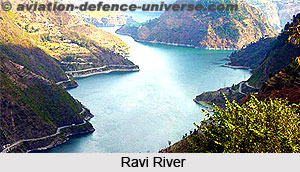 In 2018 the Central Government decided that India is wasting lot of water which can be used by farmers of Indian Punjab and J&K. Hence the central government declared Shahpur Kandi dam, as a national project and decided that it should be complete within three years. India spent Rs. 3300 crore on this multipurpose project which would provide 5000 cusecs of water to Indian Punjab. The spokesman of the dam claimed that 32,000 hectares of land can be irrigated in Samba and Kathua districts. J&K would also get 20 percent of the hydel power produced from the dam. However, the work remained slow and instead of three years the dam took six years to complete. The height of the dam is 5.5 metres and two hydropower power plants with a capacity of 206 MW would be completed in 2025.
In 2018 the Central Government decided that India is wasting lot of water which can be used by farmers of Indian Punjab and J&K. Hence the central government declared Shahpur Kandi dam, as a national project and decided that it should be complete within three years. India spent Rs. 3300 crore on this multipurpose project which would provide 5000 cusecs of water to Indian Punjab. The spokesman of the dam claimed that 32,000 hectares of land can be irrigated in Samba and Kathua districts. J&K would also get 20 percent of the hydel power produced from the dam. However, the work remained slow and instead of three years the dam took six years to complete. The height of the dam is 5.5 metres and two hydropower power plants with a capacity of 206 MW would be completed in 2025.
The Union Minister of State in the Prime Minister’s Office Dr. Jitendra Singh stated at a public meeting at Basohli in Kathua district, on 25 February that Prime Minister Narendra Modi accorded the highest priority to the Shahpur-Kandi dam project as it has the potential to irrigate thousands of acres of agricultural land in Jammu and Kashmir. He stated that “In 2014, Prime Minister Narendra Modi was briefed about Shahpur Kandi project and its benefits. He set up high level committee under the chairmanship of PM’s then Principal Secretary Nripendra Mishra. Even former Chief Minister Mehbooba Mufti tried to sabotage the project by raising the demand of Rs 600 crore compensation from Punjab Government.”
In 2016 Prime Minister Narendra Modi in a rally stated that India would augment the utilisation of water resources from Sutlej, Beas, and Ravi rivers so that Indian farmers are benefited. He also mentioned that water should not be wasted and its flow to Pakistan should be stopped. A task force was constituted to study and take measures to ensure that the water of all the three rivers is utilised by farmers of Punjab and J&K and it does not go to Pakistan. India emphasised that under the IWT, Delhi has full control on the water of Ravi, Sutlej, and Beas while Islamabad has right over the waters of Indus, Jhelum, and Chenab rivers. Last week of February 2024 saw the construction of Shahpur Kandi dam completing and India successfully curtailing the flow of water to Pakistan. Water is discharged from Ranjeet Sagar Dam for the Shahpur Kandi barrage and within three months Shahpur Kandi barrage would attain its required height.
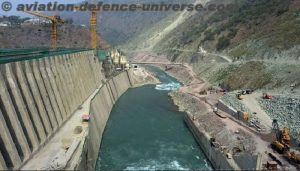 India which understands the importance of water has undertaken several water management projects. It constructed Bhakra Dam on river Sutlej, Pong and Pandoh Dam on Beas and Thein (Ranjit Sagar) barrage on river Ravi. Besides these dams, India also constructed projects like Indira Gandhi Nahar Project and Beas-Sutlej link. These dams and projects enabled India to utilise its 95% share of water from all three rivers.
India which understands the importance of water has undertaken several water management projects. It constructed Bhakra Dam on river Sutlej, Pong and Pandoh Dam on Beas and Thein (Ranjit Sagar) barrage on river Ravi. Besides these dams, India also constructed projects like Indira Gandhi Nahar Project and Beas-Sutlej link. These dams and projects enabled India to utilise its 95% share of water from all three rivers.
An official of the dam also claimed that once Shahpur Kandi Dam becomes operational, Ranjit Sagar Dam would also be operated at its full capacity and no water would be spilled to Pakistan. The Indus Water Treaty was signed in 1960 between Indian Prime Minister Jawaharlal Nehru and Pakistani President Ayub Khan with the World Bank being a signatory. Under the treaty there are restrictions on building storage systems, but India has right to produce hydroelectricity.
In 2023 India issued notices to Pakistan that it wants to amend the Indus Water Treaty. India also mentioned that Islamabad’s attitude is “intransigence” in resolution of the disputes over the Kishenganga and Ratle hydropower projects. Pakistan which was using the water of Ravi River, opposed the construction of the dam and civil society organisations have organised a rally in Lahore and demanded that India and Pakistan should review and amend the IWT so that the natural flow of the rivers is not hampered. Pakistani media called it “Water terrorism”. On 27 February opposition parties of Pakistan organised a joint protest in Karachi and observed it as “Black Day”.
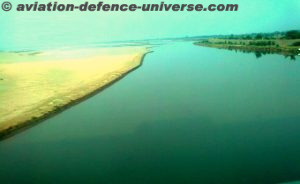
‘Pakistan Today’ an important newspaper of 25 February 2024 put a headline ‘Water terrorism’ intensifies as India stops Ravi River water to Pakistan. The hard-hitting article claims that “India has stopped the flow of the Ravi River to Pakistan by constructing Shahpur Kandi barrage which is situated on the borders of Indian Punjab and the state of illegally Occupied Jammu and Kashmir.” The Pakistani media, which is inherently anti India, alleges that India was committing the water terrorism against Pakistan since long and now it stopped water to Pakistan under the pretext of irrigation and hydro power generation. The “Dawn” a leading Pakistani newspaper of 26th February 2024 also mentioned that “India Stops Ravi Water Flow To Pakistan With A Dam In Punjab: Explained”.
Pakistan Permanent Representative in the United Nations Ambassador Munir Akram also stated in the UN Security Council that Pakistan wants to strengthen IWT which gives food security to the people of Pakistan. Islamabad wants that IWT should be implemented in letter and spirit.
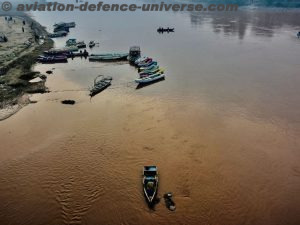
Pakistan has neither conserved nor developed its water resources. Bankrupt Pakistan has no money to invest in long-term projects like construction of big dams, canals, and lakes where the rain water or surplus water can be retained. Islamabad is habituated to malign India then get some favours from India by claiming that it is a big country and hence it should show magnanimity. Islamabad used water of Ravi River for so many years as India could not construct the barrage. The present government took initiative and Shahpur Kandi barrage is complete and water flow to Pakistan is curtailed. Now Islamabad instead of blaming itself for not planning or conserving the water wants to blame India and get assistance from international organisations and the western countries.
(Jai Kumar Verma is a Delhi-based strategic analyst and member of United Services Institute of India and The Manohar Parrikar Institute for Defence Studies and Analyses. The views in the article are solely the author’s. He can be contacted at editor.adu@gmail.com)


































